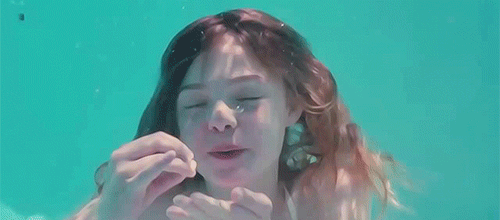CHRIS REVIEWS: Somewhere (dir. sofia coppola, 2010)
/Hello, readers. Every once in a while, we publish a selection from a monthly newsletter Chris writes for Storyological patrons called, CHRIS REVIEWS EVERYTHING. If you'd like to receive this newsletter, and support Storyological in the process, visit our Patreon page to sign up.
cleo (elle fanning) in somewhere
"There are no metaphors. Only people."
Sofia Coppola understands aloneness and loneliness better than most. She knows, for example, that aloneness and loneliness are not the same thing. We are all alone, but we are not always lonely. To be alone is to be alive. To be lonely is to feel cut off from life. Her films consist almost entirely of characters cut off from the possibilities of life. Somewhere along the way, though, they meet with someone, or some event, that threatens to wake them up. And, in the end, we will see them riding, or walking, off into the sunset. Often, they are still alone. This is okay. Their victory in these stories is not to find and hold onto love, but to rediscover that such things are possible. Whether they are about queens or movie stars or lonely Americans in Japan, Coppola makes films about us, and, like us, they tend to be relatively straightforward, if enigmatic, creatures.
Somewhere is a simple and enigmatic film. It is about a world famous actor, Johnny Marco (Stephen Dourff) and his relationship with his daughter, Cleo (Elle Fanning). We don’t get much of glitzy parties or boring junkets. We don’t get much, really, of the events of Hollywood lifestyle. We do get the trappings, though. We get penthouses and pools and muscle cars and private pole dances. By the time Marco’s daughter shows up, we already know that Marco lives an empty life and we are not surprised to learn that he hasn’t been around for much of her life. Wherever Cleo has been—even if they shared the same room—Marco has always been somewhere else.
I have seen Coppola’s style of filmmaking described as detached. People say this, I think, because they believe that since her characters rarely find the words to tell us what they want or how they feel that Coppola doesn’t know how, or isn’t interested in, communicating to us what her characters want and feel. This makes sense. We have become accustomed to thinking of film as an art-form in which very little is asked of us as viewers. We expect there to be a central conflict and a series of smaller conflicts which reveal and frustrate a character’s desire until such time as we reach some sort of resolution. In films like this, we often imagine we’re observing characters when what we’re really observing are arguments between metaphors. Coppola constructs her scenes more like those found in the old masterpieces of Europe. La Dolce Vita. L’Avventura. Le Mepris. We linger in moments. There are no metaphors. Only people. There is no rush to find the next obstacle to our character’s desire. We already have everything that we need.
Most Hollywood films teach us to identify with and see ourselves in the actions of a hero. They do this by attempting to construct conflicts as universally as possible. I wonder, sometimes, if this has led people to fall out of the practice of observing and imagining the interiority of characters. It is rare to see, as in Coppola’s films, a film that asks us not to identify with, but to enter into empathy with a character. To imagine them, as it were. I have had many arguments with people who believe film to be a passive art form. I wonder if they have as much trouble imagining the reality of real people as they do imagining the reality of the people they see on screen. There is no such thing as a passive experience. There are only people experiencing things passively.
Coppola’s films are all show and no tell. They invite misunderstanding and approach great art. There is a scene, about halfway through, in which we find Marco alone in a make-up chair, his face vanished beneath a shell of white plaster. Coppola takes her time here. We zoom in on this faceless man with a great and delicate slowness. There is no soundtrack. Only the sound of his breath. In and out. He is no one. But he is someone. We can’t see him. But we know he’s alone.
Without his Cleo, Marco is lost. With his daughter, he comes to life. They play ping pong. They have tea at the bottom of a pool. Elle Fanning, as Cleo, floats through these scenes, pale and lanky and so obviously desperate for her father to be a father. Dourff, for his part, plays Marco’s slow unfurling, his slow becoming, so delicately that there’s never a moment where we go, Aha! There he is! But somewhere along the way, perhaps at ping pong, or at the bottom of that pool, we know that we’ve known it for a while now. Here he was, we think. There they are.
Late in the film, in a poolside scene, Coppola reverses the shot she filmed of the faceless man. Here Marco and Cleo sit side-by-side, and Coppola leaves them there, drifting slowly back. We’ve seen all we need to see, she seems to be saying, and now it’s time to go.
That’s the secret of a film like this. It gives you the space to lose yourself in the lives of these strangers. And when they find what they need, so do you. I have rarely been so affected by a film.



